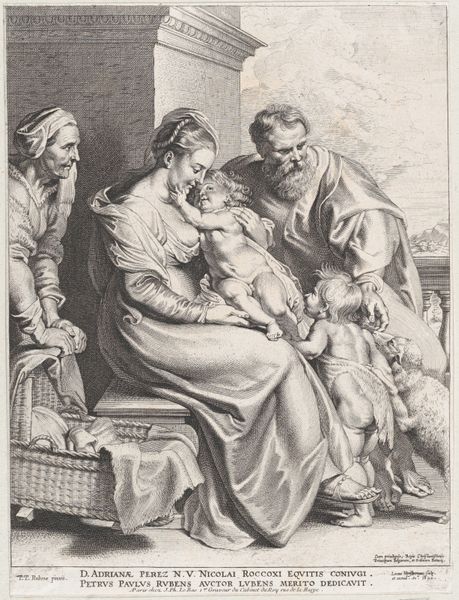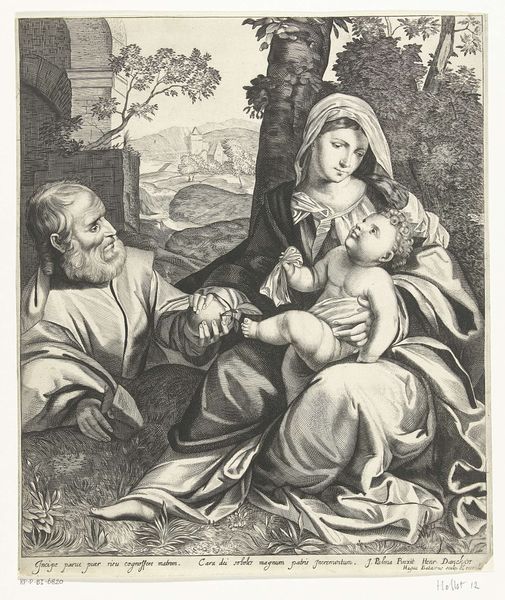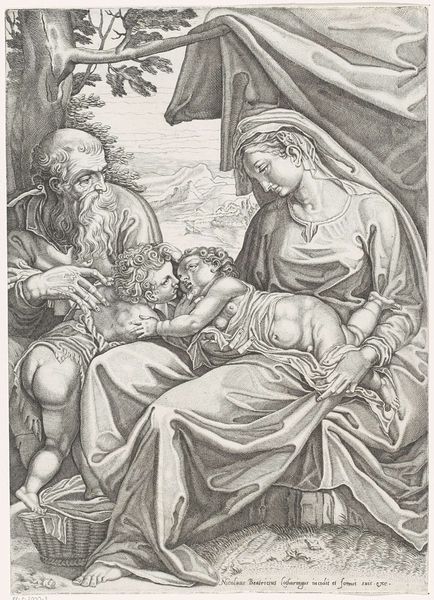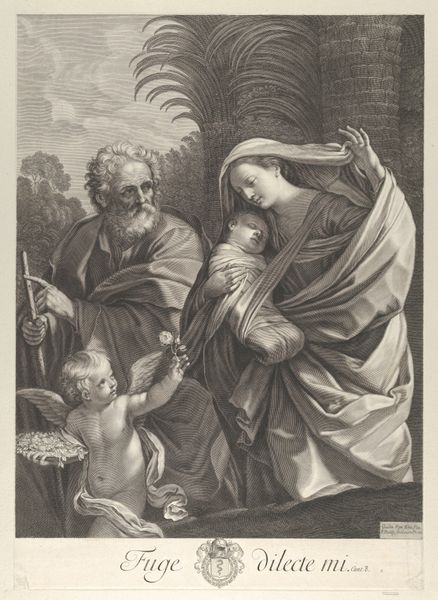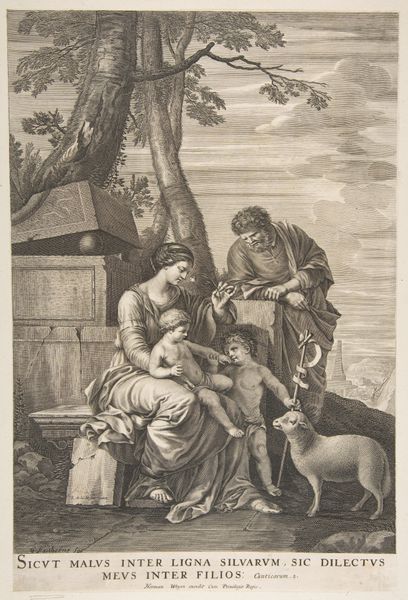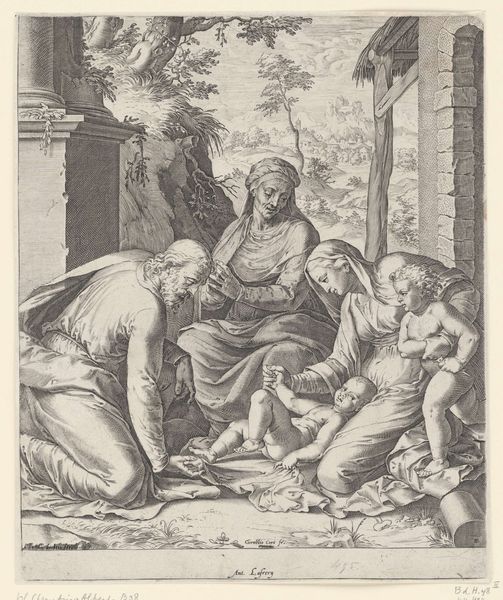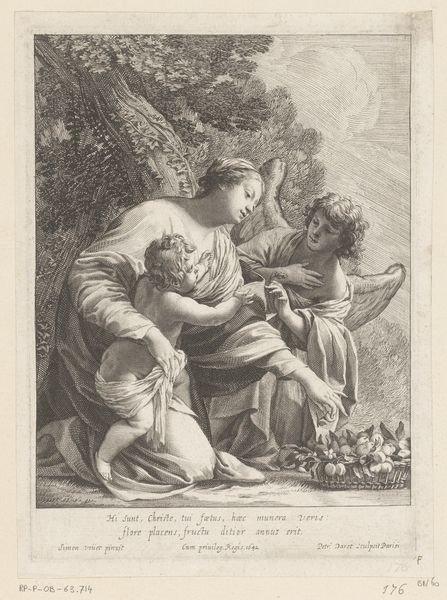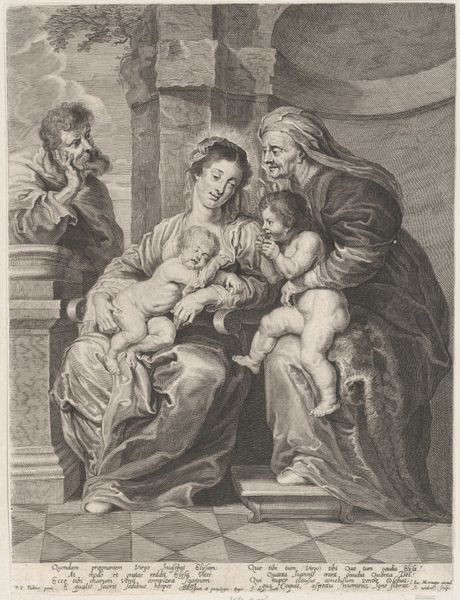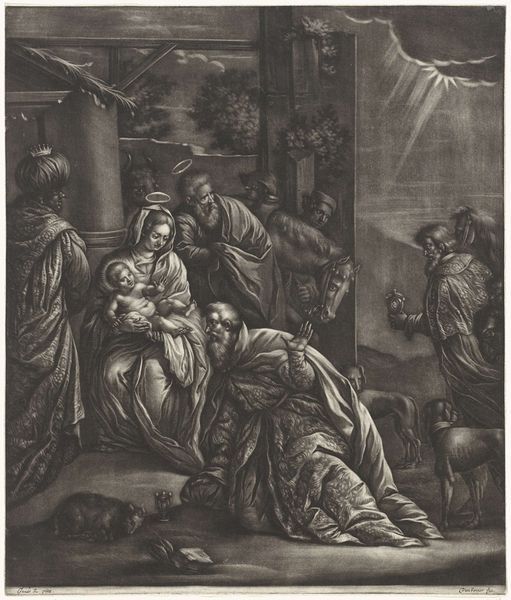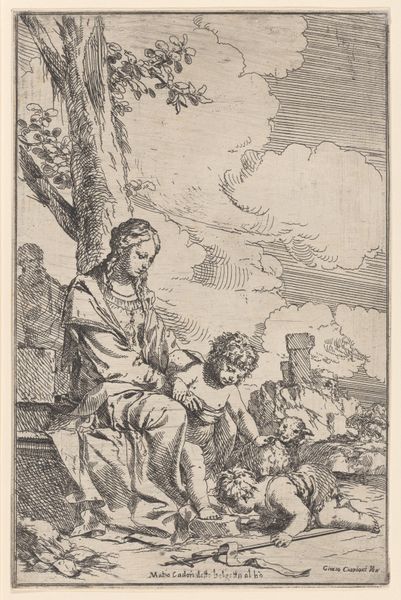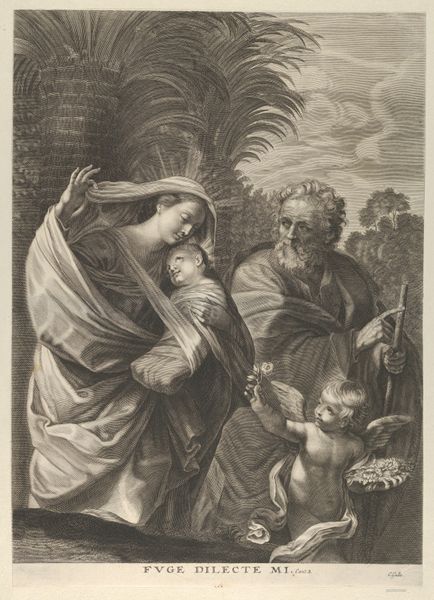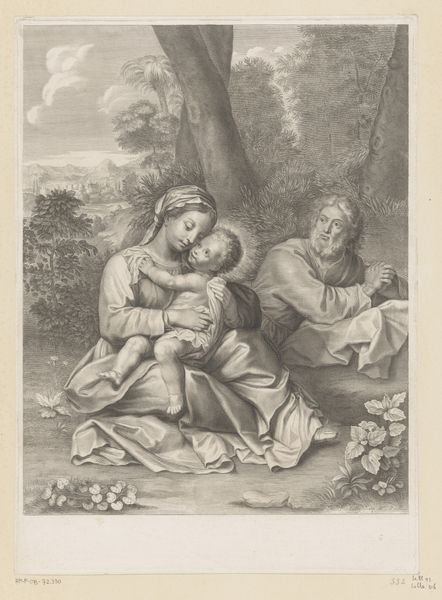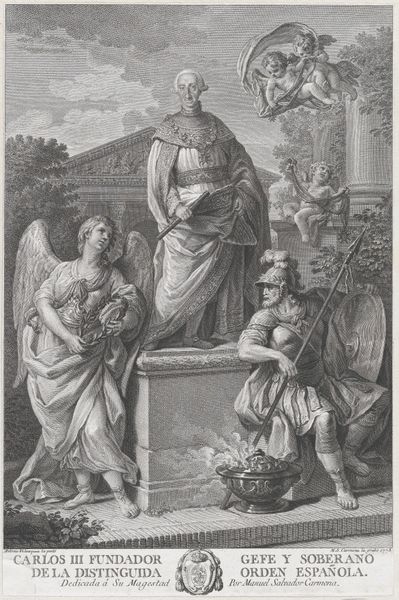
The Holy Family with Saint John the Baptist 1612 - 1625
0:00
0:00
drawing, print, engraving
#
portrait
#
drawing
#
baroque
# print
#
figuration
#
history-painting
#
italian-renaissance
#
engraving
#
virgin-mary
Dimensions: Sheet (Trimmed): 10 1/2 × 7 1/16 in. (26.6 × 18 cm)
Copyright: Public Domain
Curator: Look at this beautiful engraving, "The Holy Family with Saint John the Baptist," created sometime between 1612 and 1625 by Michel Lasne, now residing at the Metropolitan Museum of Art. What's your immediate reaction to it? Editor: It strikes me as overwhelmingly detailed and precise for an engraving, almost sculptural. There is such palpable tenderness depicted alongside these remnants of classical architecture. Curator: Exactly. The figures themselves exhibit this idealized beauty characteristic of Italian Renaissance and Baroque styles, while the very medium itself reflects a laborious, highly skilled process. Lasne translated the oil paintings from his master, Peter Paul Rubens, into meticulously carved lines. Editor: It is indeed remarkable when considering the relationship to labor and reproducibility that engravings enabled during this era. And what kind of tools were used to carve these tiny, individual lines that make up Mary's garments? Each one adds to the whole meaning! Curator: Let’s consider, for example, how the composition directs our gaze. The figures form a tight-knit pyramidal shape centered on Mary, with Saint John at her knee. Broken columns offer a juxtaposition that invites inquiries on the temporality. What purpose might that choice serve within the work as a whole? Editor: From my point of view, they can be a reference to a glorious civilization being gradually forgotten in favor of Christianity. It reflects the consumption of previous symbolic architectures being re-used within newer value frameworks. Curator: Interesting how those layers of artistic and historical meaning work together. These materials invite a much more rich discourse. Editor: Indeed. I find myself deeply considering the social and political forces involved in this piece's production, not just its surface. The economic support provided, distribution methods of art as commodity—elements sometimes sidelined in traditional analyses, yet profoundly insightful here. Curator: A perspective well worth pondering as we continue navigating this intriguing piece and its intricate relationship with its audience, wouldn't you say? Editor: Yes, absolutely! I think what it reflects about value is fascinating and can lead people to deeper understand both craft and conceptual depth coexisting.
Comments
No comments
Be the first to comment and join the conversation on the ultimate creative platform.
